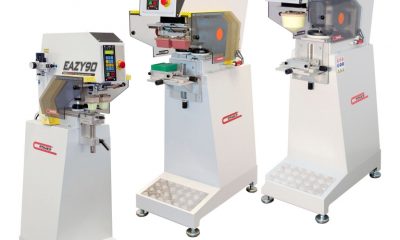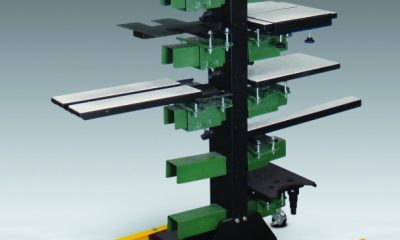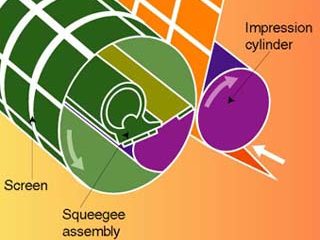Pad specifications.
Whenever possible, use identical pad shapes for printing process-colors; variations in pad shape may cause image distortion. Make sure the pads are the same hardness, and when you order pads, make sure the manufacturer sends pads that were produced in the same batch.
To extend the life of your pads, maintain their condition as recommended by the manufacturer. For more information on pad maintenance, see our article, "Understanding the Pad in Pad Printing," Screen Printing, May ’95, page 111.
Pad specifications.
Whenever possible, use identical pad shapes for printing process-colors; variations in pad shape may cause image distortion. Make sure the pads are the same hardness, and when you order pads, make sure the manufacturer sends pads that were produced in the same batch.
To extend the life of your pads, maintain their condition as recommended by the manufacturer. For more information on pad maintenance, see our article, "Understanding the Pad in Pad Printing," Screen Printing, May ’95, page 111.
Cliche position and etching accuracy. The cliche is potentially the most problematic variable in the process for newcomers to pad printing. Printers have two options when setting up cliches for image transfer.
The first method is to use a single cliche etched with each of the four separations. Machines that use this approach offer very limited adjustment options, which means the images must be accurately etched and precisely positioned. The other, more preferable, option is to use four separate cliches, each carrying a single color. Presses that use this system offer greater flexibility in making registration adjustments between colors.
When setting up your press, try not to compromise the positional accuracy of your cliche(s). Without targets, achieving accurate registration can be difficult, but you can get around this problem by looking at the printed image and selecting three positions in the design where all the colors are prominent. These three points ideally will be straight edges or uniform geometric shapes where misregistered colors will be most readily apparent.
Also aim for the characteristic rosette shape that you see in all well-registered process-color prints. We can’t count the number of times we’ve heard printers say "the color is right, but it’s not in register." With four-color process this is simply not possible. If it’s out of register, the color will be wrong.
Although the etch depth of the cliche doesn’t influence registration accuracy, it plays a role in the color accuracy of the print. Basically, you can follow one of two approaches when etching: You can etch every cliche to the same depth and adjust color intensity by modifying the ink. Or you can adjust etch depth independently for each color to provide the desired color intensity.
We prefer the first option because ink adjustments are easier to accommodate. However, if you use this approach, you must be very precise in your ink mixing and keep accurate records of any adjustments you make.

 Case Studies2 months ago
Case Studies2 months ago
 Art, Ad, or Alchemy2 months ago
Art, Ad, or Alchemy2 months ago
 Andy MacDougall2 months ago
Andy MacDougall2 months ago
 Columns3 weeks ago
Columns3 weeks ago
 Editor's Note3 weeks ago
Editor's Note3 weeks ago
 Marshall Atkinson3 weeks ago
Marshall Atkinson3 weeks ago
 Thomas Trimingham2 months ago
Thomas Trimingham2 months ago
 Case Studies3 weeks ago
Case Studies3 weeks ago







